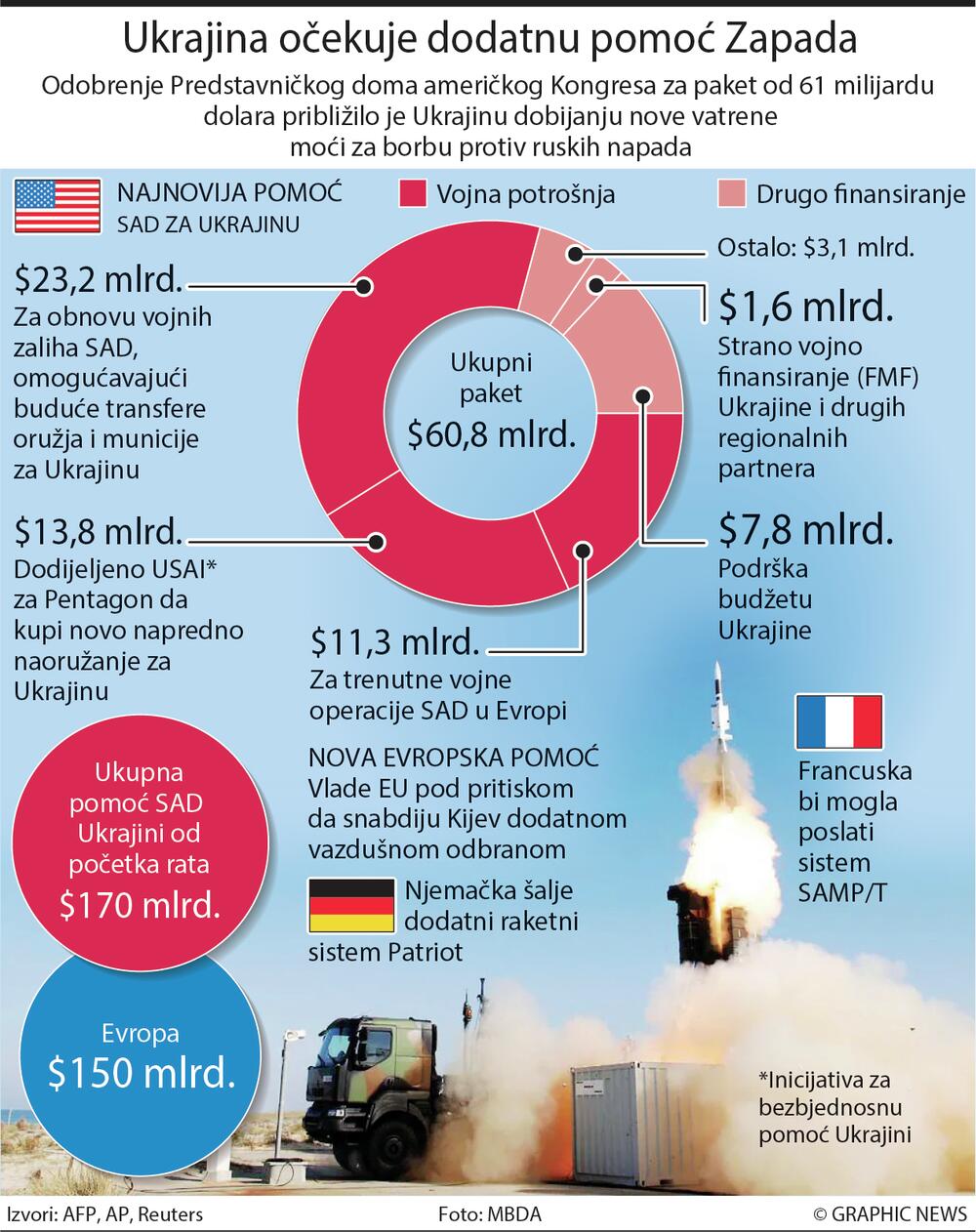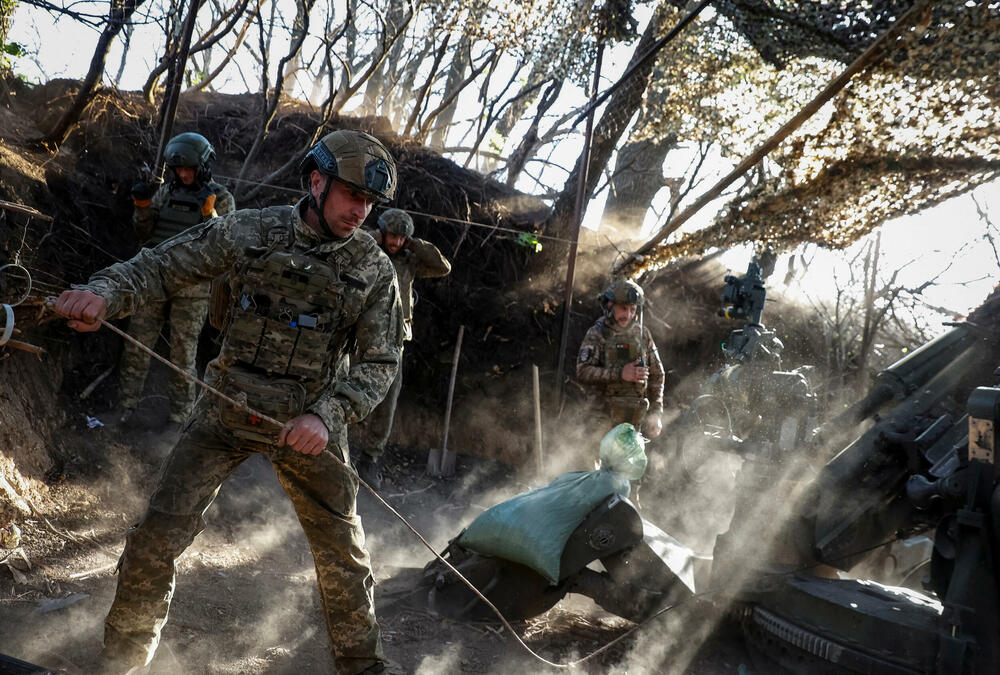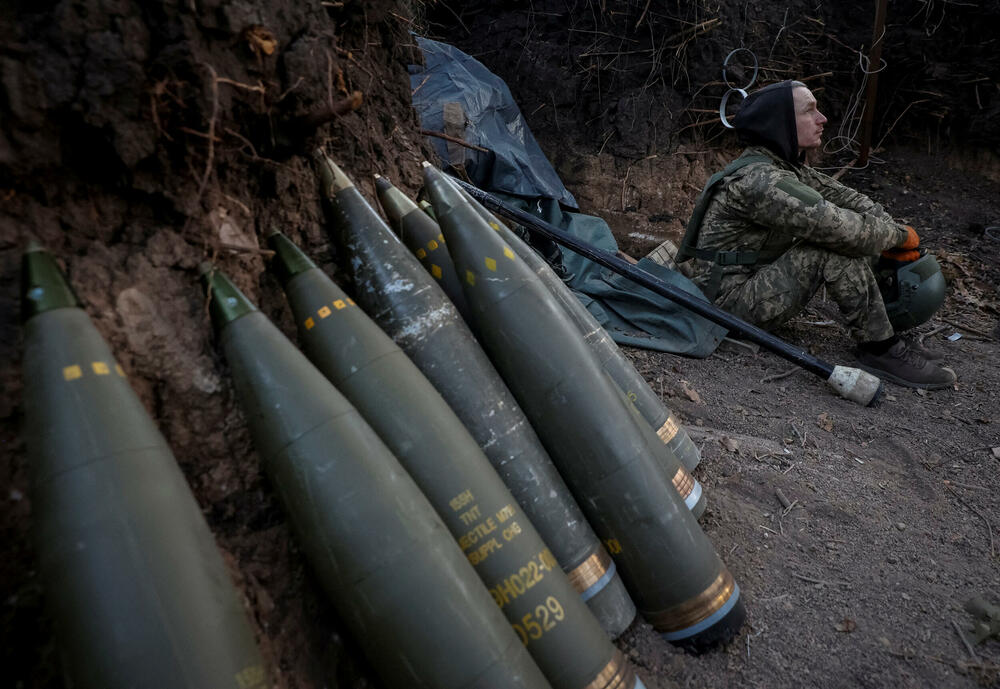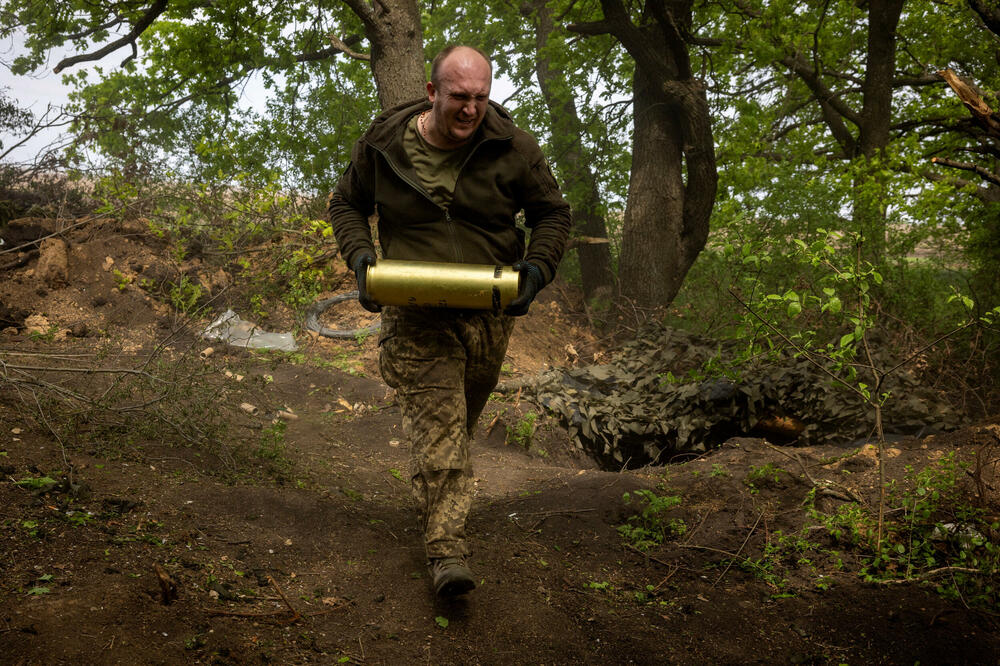For exhausted Ukrainian artillerymen resisting Russian forces near the eastern city of Kupyansk, a US aid package expected to be finally passed this week is a lifeline and potentially a game-changer, although it may take some time, analysts say.
"If they had adopted it (earlier), it would have changed the situation dramatically," a soldier nicknamed Mornar told Reuters. He added that the lack of shells reduced their support for the infantry, costing them lives and territory.
After six months of wrangling in Congress, a $61 billion aid package is expected to win the approval of the US Senate and the signature of President Joe Biden this week, and restore Kiev's critically low supplies of artillery shells and air defenses, writes Reuters.

The influx of weapons should improve Kiev's chances of avoiding a major Russian breakthrough in the east, according to two military analysts, a former Ukrainian defense minister and a European security official.
But Kiev still faces a shortage of battlefield manpower, while questions remain about the strength of its fortifications along a vast 1,000-kilometer front ahead of what President Volodymyr Zelensky said could be Russia's summer offensive, the analysis said.
"The most important source of Ukrainian weakness is the lack of human resources," believes Konrad Muzika, director of the Rocan military consulting firm in Poland.
After months of debate, a law signed by Zelensky on April 16, which changes the rules on how Ukraine mobilizes civilians into the army, will take effect in May with the aim of making the process faster, more transparent and more efficient.
But the new recruits will need months of training before they can be deployed, which, on the other hand, opens a "window of opportunity" that Russia can exploit, Muzika said.
"I would expect the situation to continue to deteriorate over the next three months, but if the mobilization goes according to plan and US aid is unblocked, the situation should improve from autumn," he said.
The Kremlin has said that US aid will not change Russian dominance on the front and that the result will be even more Ukrainian casualties.
Reduce the difference in grenades
Moscow has the advantage on the battlefield since it captured Avdiyivka, a city long a bastion in the eastern Donbass region, in February, and its forces have been slowly advancing, using larger numbers of troops and artillery shells.
Now they are closing in on the town of Chasov Yar, located on high ground that, if captured, would bring Moscow closer to the remaining Kiev-controlled cities of the Donbass, such as Kostyanivka, Kramatorsk and Slovyansk.
Zelensky said last week that Russia can now fire 10 times more artillery shells than Ukrainian troops. Russian forces outnumber Ukraine's by 7-10 times in the east, a Ukrainian general said this month.

Andriy Yusov, a spokesman for Ukraine's military intelligence service, said Moscow is focused on fully capturing the eastern regions of Donetsk and Luhansk, which make up Donbas.
He added that Russia is attacking there on three fronts - west of Avdijivka, from Kupjansk to Liman and west of Bakhmut. In the south, it is putting pressure on Robotine, a village that Kiev recaptured during last year's attack.
Ukrainian positions have been hit this year by thousands of glide bombs dropped by planes that took advantage of Russian air superiority and weakened Ukrainian air defenses.
Andriy Zagorodniuk, Ukraine's former defense minister, said the influx of ground-based air defense systems would be helpful, while US F-16 fighter jets, expected by Kiev later this year, would completely suppress the Russian jets.
The renewed stockpile of artillery shells should reduce the gap in missiles fired to several Russian missiles for every Ukrainian missile, he added.
"We don't need a one-to-one ratio. Three-to-one would get the job done," he said, noting that the Ukrainians have a more "calculated" approach versus Russia's reliance on quantity.
In addition to the US, the European Union's aid includes an initiative led by the Czech Republic, which will begin supplying Ukraine with about 300.000 rounds of 155 mm artillery shells starting in June.
A senior European security source told Reuters that if Ukraine receives new US and EU aid, the likelihood of deterring a major Russian breakthrough over the next 12 months is "quite high".
Additional loss of territory
Ukraine's military needs a "massive" reinforcement of manpower to stop Russian forces along the entire front, Muzika said, adding that a separate initiative to recruit volunteers would not be enough to cover the deficit.
A European security source also said Ukraine must step up mobilization efforts.
Neither side in the conflict shares official figures on their military strength and casualty rates.

Ukrainian Yusov said Russia, which controls 18 percent of Ukrainian territory, has between 450.000 and 470.000 ground troops fighting in Ukraine, in addition to 35.000 National Guard members, as well as separate air force and navy operations.
Kiev has previously said it has about a million soldiers. Zelenskiy said in December that his army wants to mobilize up to half a million new soldiers.
Muzika said that it is not clear how deep the Ukrainian fortifications are. The army says it is working around the clock to improve them, and Zelenski said this month that construction in some areas of the front is 98 percent complete.
"Essentially, what we are looking at in 2024 is as strong a defensive position as possible, but with the acceptance that the Ukrainians are likely to lose some territory to the Russians," said Matthew Saville, director of military science at the London-based RUSI institute.
This, he said, was the result of last year's Ukrainian counter-offensive which could not significantly break through Russian lines, the concentration of Russian forces and the long delay in approving US military aid.
"This is a far later and far less favorable position than the Ukrainians expected in terms of this and other support," he said.
"The big challenge now is to simultaneously provide a strong defense and then prepare for the offensive in 2025."
Bonus video:




